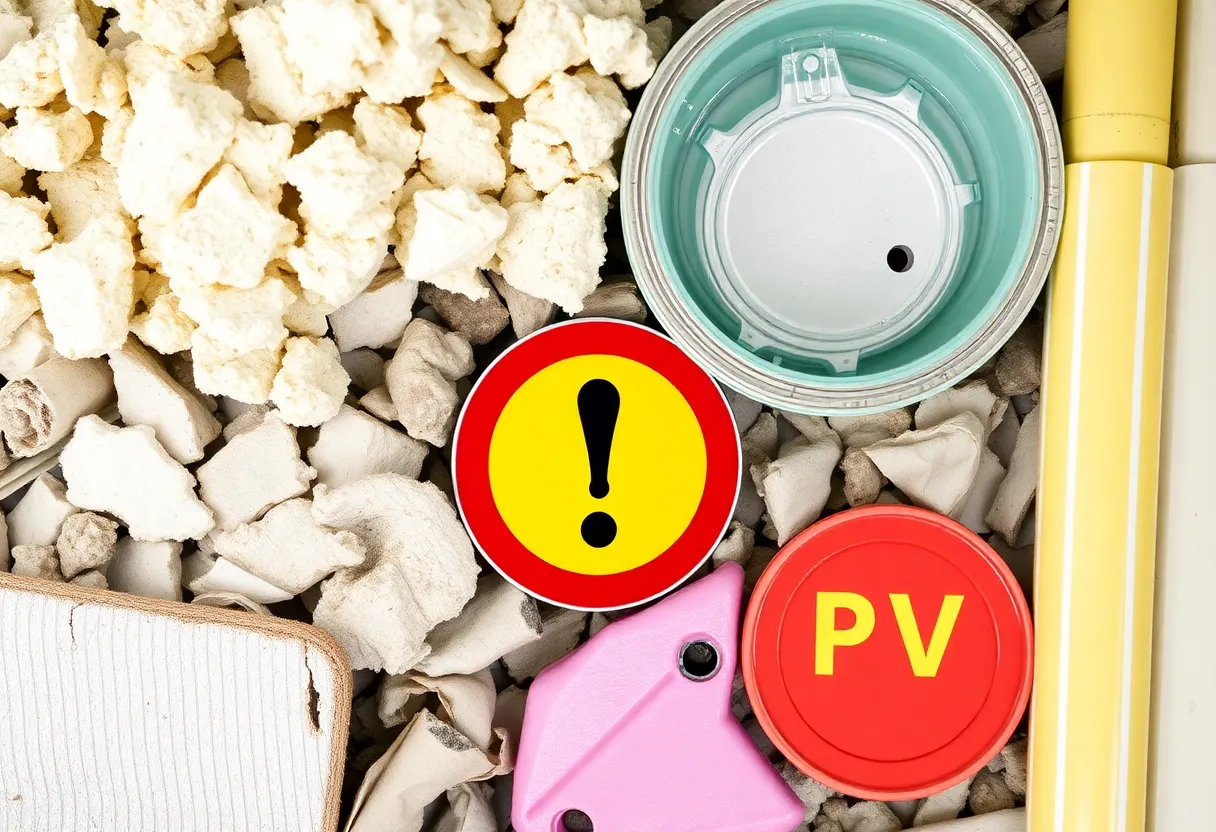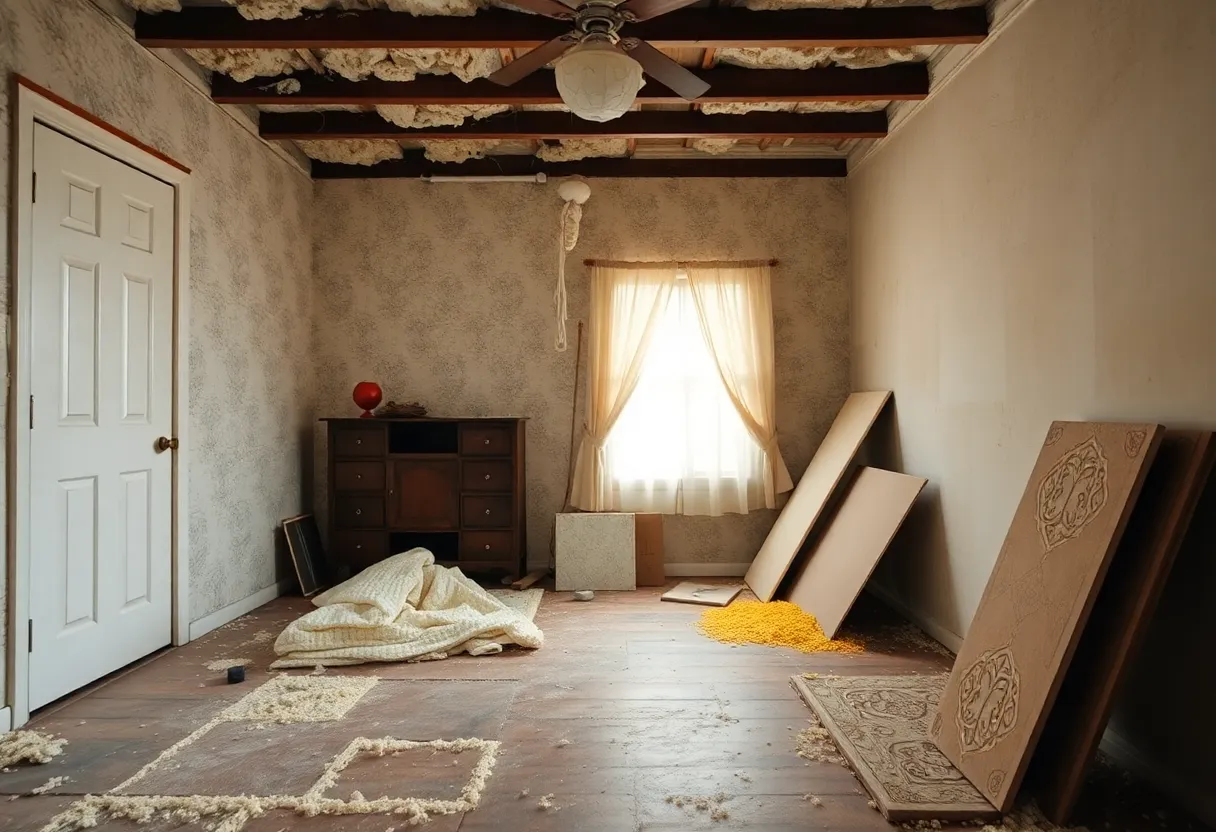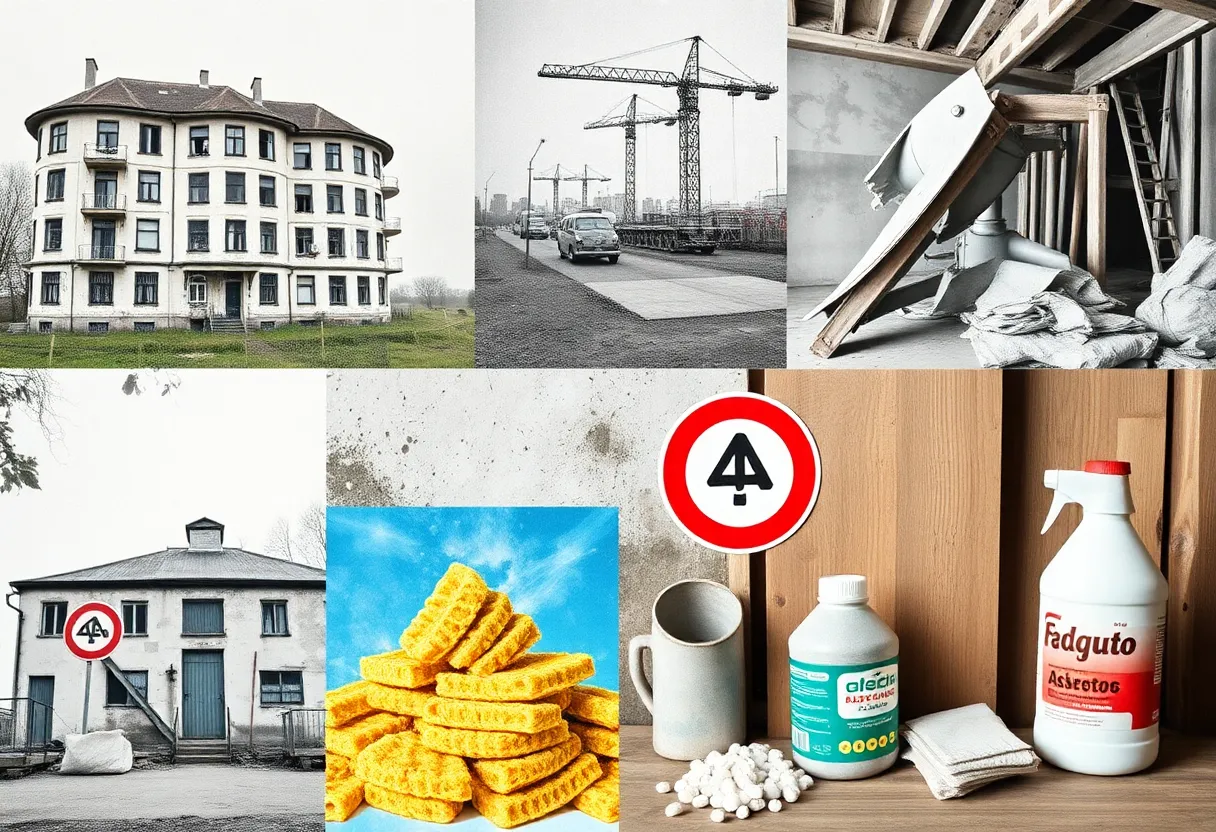News Summary
This article discusses the ongoing risks associated with certain building materials still legal in the U.S., despite significant health hazards.
Unseen Dangers: The Truth About U.S. Building Materials That Still Pose Risks
Despite the increasing awareness of health risks, certain building materials remain legal in the United States, posing potential dangers to individuals and families. Shockingly, while countries around the globe enforce strict bans, the U.S. lags behind when it comes to protecting its citizens from hazardous substances like asbestos, lead-based paint, polyvinyl chloride (PVC), chromated copper arsenate (CCA), and formaldehyde-based insulation.
The Asbestos Legacy
Known as a “miracle mineral” for its fire-resistant and durable properties, asbestos has an ugly side that many Americans are unaware of. Although banned in over 60 countries like the European Union and Australia, certain applications of asbestos remain legal in the U.S. This toxic material—often found in roofing materials, cement pipes, and even brake pads—releases microscopic fibers upon disturbance. These fibers, when inhaled, can lead to devastating health issues, including mesothelioma and lung cancer.
The tragic reality is that while new uses of asbestos are forbidden, older products containing the material are still permissible, which means many homes may unknowingly harbor this hidden killer. To safeguard your health, it’s strongly recommended to hire certified professionals for any asbestos removal from your home.
Colorful Dangers: Lead-Based Paint
Slightly less obvious but equally harmful, lead-based paint is still legally allowed in certain U.S. contexts. Banned for residential purposes in countries like Canada and the U.K., it continues to be used in industrial and military settings. When lead paint chips or produces dust, it can create serious health risks, especially for vulnerable populations such as children and pregnant women.
Lead poisoning can lead to developmental delays and a myriad of other serious health problems, making it essential for homes built before 1978 to undergo lead paint testing. The stakes are high, and awareness is key to prevention.
PVC: A Versatile Yet Risky Choice
Polyvinyl chloride (PVC) might be celebrated for its affordability and versatility in products like pipes and flooring, but lurking beneath its surface is a serious health threat. Although some countries like Germany and Sweden impose restrictions on PVC, it remains widely legal in the U.S. The production and disposal of PVC are associated with the release of toxic chemicals, which have been linked to cancer and other health hazards.
For safer alternatives, homeowners are urged to consider phthalate-free products or switch to materials like PEX or copper pipes, which can serve similar functions without the associated health risks.
CCA Treatment: A Slippery Slope
Chromated copper arsenate (CCA) was once a popular choice for treating wood to resist rot and insect damage. However, while it was phased out for residential use in the U.S. in 2003, it remains legal in certain industrial applications. Many countries have banned CCA altogether due to the risks of arsenic leaching into soil and water. Homeowners working with older CCA-treated woods are advised to exercise caution and consider safer alternatives for their projects.
The Formaldehyde Factor
Even today, products treated with formaldehyde are still legal in U.S. construction, despite being banned in countries like Canada and Denmark. Known to be a potent carcinogen, formaldehyde can lead to severe respiratory issues and skin irritation. Therefore, consumers should seek out products labeled as “formaldehyde-free” or certified by reputable organizations to minimize health risks.
Awareness is Key
In light of these startling facts, awareness about potentially harmful building materials is essential for protecting your health and that of your family. It’s crucial to research materials and question contractors before making construction or renovation choices. Understanding that legal status does not automatically ensure safety is vital. By being proactive, you can help prevent future health issues related to these toxic materials.
Organizations like Buro Happold and mindful MATERIALS are beginning to bridge gaps in industry data regarding material sustainability, working to promote transparency and better decision-making. Meanwhile, startups such as EcoForge are striving to create sustainable building materials, further driving home the importance of addressing the toxic materials that remain legal in the U.S.
Deeper Dive: News & Info About This Topic
HERE Resources
Groundbreaking Research Unveils Genetic Links Between Asbestos Exposure and Mesothelioma
Groundbreaking Study Unveils Genetic Clues in Malignant Pleural Mesothelioma
Asbestos Corruption Trial Nears Conclusion in Bloemfontein
Reserve Bank’s Martin Place Headquarters Set for Major Asbestos Remediation
Legal Battles in the Spotlight: The Case of Moroadi Cholota
New Stadium Plans Spark Asbestos Concerns in Berlin
Asbestos on the Battlefield: Russian Forces Reinforce Vehicles Amidst Intense Fighting in Chasiv Yar
Health Crisis for USS James E. Kyes Veterans Due to Asbestos
USS New (DD-818): A Legacy of Valor and Asbestos Dangers
City Council Approves Asbestos Abatement for Historic Centennial Hall



















